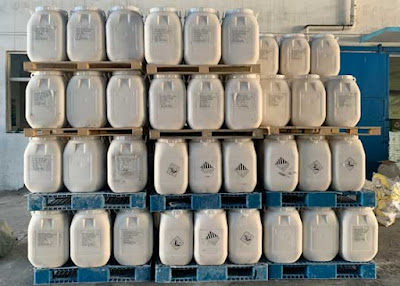Characteristics and Flocculation Effect of polyaluminum chloride
Polyaluminum chloride is a versatile inorganic polymer compound with a wide range of uses. It is mainly used as a flocculant in water treatment plants. Polyaluminum chloride is a polymer formed by the interaction of hydroxide ions and polyvalent anions. Large molecules and high charges. Its main properties are mainly colloidal solids, mostly colorless colloidal solids. Sometimes it becomes a transparent liquid when it dissolves, and sometimes it becomes black mucus when it contains other charges. Its solubility is average. It is easily soluble in water and also soluble in alcohol, but insoluble in absolute ethanol and glycerin.
Different types of polyaluminum chloride have different dosages and coagulation effects. Therefore, a suitable flocculant must be used. In terms of morphology, it can be divided into solid and liquid. The solid is divided into brown, beige, golden and white according to different colors. The liquid can be colorless and transparent, slightly yellow, light yellow to yellow brown. The white color PAC 30% powder for sale in our company is mainly used for drinking water treatment. Different colors of polyaluminum chloride also have big differences in application and production technology. Choose according to different water quality in water treatment. If you would like to buy coagulant for drinking water treatment, please click this link(https://www.watertreatment-chemicals.com/pac-30/).
The basicity of polyaluminum chloride is a relatively important indicator in polyaluminum, especially for drinking water grade polyaluminum products. It is an inorganic polymer water treatment agent with relatively high molecular weight and high electric charge. It has the advantages of good spray drying stability, wide water area, fast hydrolysis speed, strong adsorption capacity, large alum formation, fast dense sedimentation, low turbidity of effluent water, and good dehydration performance. It can also remove gall, odor, fluorine, aluminum, chromium, oil, turbidity, heavy metal salts, and radioactive pollutants. It has a wide range of uses in the purification of various water sources.
Production facilities must also be closed, and production workshops must be ventilated. Polyaluminum chloride is relatively corrosive. When heated to above 100 degrees, it starts to decompose, releasing hydrogen chloride gas and finally decomposing into alumina. Polyaluminum chloride can react with acid to generate aluminum. The salt mixed with the polybasic acid salt is easy to precipitate and can reduce flocculation.
Water temperature also has an important effect on polyaluminum chloride. As the water temperature decreases, the coagulation response weakens. Water temperature affects the flocculation rate in different ways.
And the final size, even if a certain amount of coagulant is added, cannot compensate for the requirement for higher response by reducing the effect of water temperature on the coagulation result. The alkalinity of water is one of the main factors that affect coagulation, and the level of suspended particles affects the flocculation and coagulation stages.
Due to the different shapes of the products treated with aluminum salt solutions of different pH values, the coagulation effect is also different. If the water is not turbid, the coagulation effect is often very poor. The coagulant itself is not sterilized, it plays an important role. It plays a very important role in eliminating pollutants such as microorganisms in the water. Since microorganisms are mainly attached to suspended matter and organic matter, when particles and organic matter are removed due to flocculation, up to 60% to 90% of the microorganisms are also removed.




Comments
Post a Comment